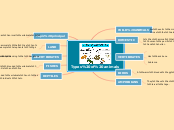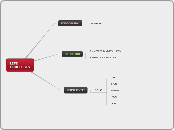VERTEBRATES
Global warming is the ongoing rise of the average temperature of the Earth's climate system which has various negative effects.
REPTILES
Overpopulation creates an increased demand for energy as well as having negative effects on our environment and ecosystems.
Overfishing is the removal of a species of fish from a body of water at a rate that the species cannot replenish, resulting in those species becoming underpopulated in that area.
This will lead to a Marine Ecosystem imbalance with time.
Snakes don´t have legs
Many reptiles have four legs
Some reptiles have a hard shell (turtles)
Reptiles have hard scales
Water is essential for agricultural production and food security. It is the lifeblood of ecosystems, including forests, lakes, and wetlands.
Overpopulation affects our water and this has negative outcomes.
Over-cultivation is the practice of excessive farming on a piece of land to the point of degradation of the soil as well as the land itself.
MAMMALS
Climate change is likely to both increase electricity demand for cooling in the summer and decrease electricity, natural gas, heating oil, and wood demand for heating in the winter.
Finding reusable energy sources can be our first step towards conserving our environment.
Aquatic mammals have fins (whales and dolphins)
Human beings have two legs and two arms
Most terrestrial mammals have four legs and a tail
In some mammals the hair is thick and called fur
Skin and hair cover their bodies
How will climate change affect the production of clean energy?
e.g.: solar, wind, water
Viviparous
New infrastructure investments may be necessary to meet increased energy demand.
e.g.: nuclear power plants
AMPHIBIANS
Many amphibians have a tail
Four legs
Thin and smooth skin
Lungs when amphibians became adults
Gills when amphibians are young
BIRDS
Healthy ecosystems and rich biodiversity are fundamental to life on our planet.
Even small changes in average temperatures can have a significant effect upon ecosystems.
The inter-connected nature of ecosystems means that the loss of species can have knock-on effects upon a range of ecosystem functions.
e.g. bees go extinct
Two legs and two wings
Their bones are thin and light, with lots of air spaces inside
Climate change will affect mountain and lowland ecosystems, the diversity of wildlife, and the distribution of freshwater.
e.g.: forest fires
Climate change is affecting the habitats of several species, which must either adapt or migrate to areas with more favorable conditions.
e.g.: natural habitat disappearing
Lungs
FISH
Climate change is supported by scientific evidence.
EXTREMITIES
Write down the consequences caused by this issue and how it will affect our lives and the environment in the future.
e.g.: flooding, rainfall increase
Fins
BODIES
Have a long body covered with scales
REPRODUCTION
Write down the consequences caused by the melting of the ice-caps and how it will affect our lives and the environment in the future.
e.g.: decreasing of polar bear habitat
Oviparous
RESPIRATION
Write down the consequences caused by this issue and how it will affect our lives and the environment in the future.
e.g.: decreasing of land surface
Gills









